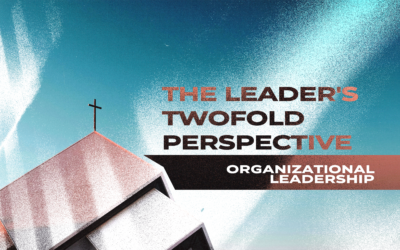Last time, we saw Jesus used organizational skills when He was here.
Today, we will see that His selection, recruitment and structure for the twelve apostles also shows He strategically organized them.
Focus Your Efforts on a Few to Reach Many
Jesus came to build an organization to fulfill His purpose.
Your personal impact will also be determined by how the organization you choose fulfills it.

So, it’s not just you. It’s how you invest your time in others. Don’t act based on what people want. Act based upon what gives your purpose the greatest impact.
According to Jesus’ example, spending a little time with a lot of people is a waste of time. Jesus designed His organization (the 12 apostles) for maximum impact. He didn’t just recruit some followers. He intentionally formatted them effectively to achieve greater things than they could accomplish as a single group of twelve people.
Perfect Love Uses Perfect Strategy
Jesus certainly possessed perfect love. But, He used perfect strategy. And we can use that strategy to further the work of the kingdom. Now, strategy does not negate love. It enhances and elevates and performs love more widely and more deeply. Strategy works as a tool to accomplish more than we can without it.
One key strategy Jesus used included the formatting the organization of the twelve apostles. The listings of the twelve apostles show us this was not a solitary group of twelve people. He designed the format and the function of His followers, even when there were only twelve of them.
This table shows the only four lists of the twelve apostles.
Strategic Organization
- All four lists consistently show Simon Peter first.
Matthew 10:2 even goes so far to say, “…first, Simon (who is called Peter)…” People often refer to Peter as brash, waffling and first to shoot off his mouth. Could it be that Peter usually spoke because he was the identified leader of the group? Doesn’t the leader usually speak for the rest of the group? Isn’t the leader really the only one who can rightfully speak for the rest of the group?

- Every list puts Philip fifth.
But, you will notice that the order inside each group differs. The first group mentions Peter first, but Andrew is second in Matthew, fourth in Mark, second in Luke and fourth in Acts. The same is true for the second group. Philip consistently heads the second group, but the order of the rest of the second group differs across the four lists.
- James of Alphaeus heads the third group, every time. But, the others in the third group change their order in the four listings.
- The first group always goes (and shows) first. The second and third groups also remain consistent.
So, Jesus divides twelve people into three groups. And, the heads of those three groups stay consistent in the only four places they are listed.
The Inner Circle
Even within the organization of the three groups, Jesus prioritizes the first group, often called “The Inner Circle”. This Inner Circle amount to four apostles: Peter, James, John and Andrew; always the first group.
Jesus Met the Inner Circle Privately
Mark 13:3 states, “Now as He sat on the Mount of Olives opposite the temple, Peter, James, John, and Andrew asked Him privately.” Even with the presence of other disciples (Mark 13:1 “…one of His disciples said…”), this private conversation only included the first four.
Only the Inner Circle Allowed
Mark 5:37 boldy states: “And He permitted no one to follow Him except Peter, James, and John the brother of James.” He intentionally excluded anyone (including the rest of the disciples, who were also present [verse 31]). He raised Jairus’s daughter from the dead. But, only three of the twelve saw it.
Only Three Went Father into the Garden of Gethsemane

Twelve sat & three followed farther. When He endured the pain of facing the cross, He only took three. Matthew 26:36-37 tells us, “Then Jesus came with them to a place called Gethsemane, and said to the disciples, ‘Sit here while I go and pray over there.’ And He took with Him Peter and the two sons of Zebedee, and He began to be sorrowful and deeply distressed. “
Inner Circle at the Mount of Transfiguration
And, Peter, James and John (and not the other apostles) followed Him to what we often call the Mount of Transfiguration in Luke 9:28-29. “Now it came to pass, about eight days after these sayings, that He took Peter, John, and James and went up on the mountain to pray. As He prayed, the appearance of His face was altered, and His robe became white and glistening.” The other apostles waited farther away.
Healing the Fever
Furthermore, Mark 1:29 tells us only Simon, Andrew, James and John entered Simon’s house with Jesus, when He healed Simon’s mother-in-law of a fever.
Why did Jesus prefer these four? Shouldn’t He include the others in all the discussion? Shouldn’t everyone be “in” on all the information being disseminated? Many churches believe that. To put it more clearly, most non-growing churches believe that. Jesus didn’t believe everyone needed to be “in” for every discussion. But, why the focus on three distinct groups and even more focus on the Inner Circle?
Jesus focused most of His efforts and time on His key leaders, who would make the biggest impact.
It seems counterintuitive. We figure Jesus possessed a pretty good grasp of His three-year timeline. Our instincts would probably dictate we need to get as many as we can and give all of them the same information so they can all do the same things.
Jesus did not do that.
Only go deeper with those who will go farther.
Rich Halcombe
He strategically invested most of His time with those who would produce the greatest impact.
Residual Impact
How well did it work?
The Three Led the Church after Jesus Left
The ones who received the most attention led the church. Galatians 2:9-10 “and when James, Cephas (Peter), and John, who seemed to be pillars…only that we should remember the poor…” Pillars support and “hold up” the building. These three led. How do we know? Because they, on behalf of the church, extended the “right hand of fellowship”. And, they also gave Paul instructions to remember the poor. Leaders. The Inner Circle led.
Individually:
- A. Peter’s name gets mentioned far more times at one hundred ninety-one (191) times, more than any other apostle. To explain, most often the Bible names him “Peter”. Sometimes he is called “Simon”. Other times he’s named “Simon Peter”. For my methodology, each time he was called “Simon Peter” only counts as being mentioned one time.
- B. The apostle John’s name appears second most often at forty-one (41) times, including the five times in the Gospel of John where he refers to himself as “the disciple whom Jesus loves”.
- C. John wrote the gospel of John & I, II & III John & Revelation
- D. Peter wrote I & II Peter & was a “father” to Mark (I Peter 5:13 “…and so does my son Mark.”), who wrote Mark
The four lists of the 12 show Jesus strategically organized His time to make the biggest impact. He did that by focusing on a few, rather than the many.
Pastor/leader, how do you spend your time? Does your life show the same strategic focus?
Who We Are
LeaderINCREASE helps leaders get clear on where to go and understand how to get there, with less hassle. We understand that choosing to make a difference as a leader isn’t always the easiest.
We focus on providing leaders with resources they need to make a difference and become actionable leaders for their organization. We look forward to helping you achieve your goals as we have done for many others.




